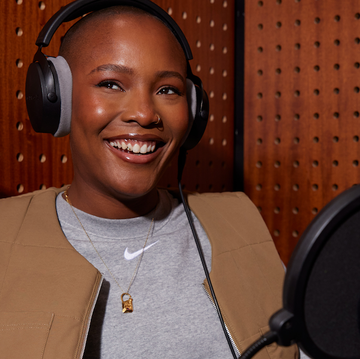The past year has been a lot, what with the pandemic wreaking havoc on everything from our social lives to our bank accounts. Over two thirds of millennials have seen their incomes reduced because of Covid-19, yet on the plus side, it’s galvanised many young people to gain a solid understanding of their personal finances and make smarter money moves.
To change your spending habits for the better and help reach your saving goals, we asked Barclays Money Mentor* Siobhan Gurrie for her simple yet realistic tips for the financial year ahead.
1. Understand your needs vs wants
Before making any major changes, establish where your money is actually going using the money-management tools available on banking apps. ‘Start by looking at your monthly spending and mark each outgoing as “needs” or “wants”,’ says Gurrie.
For ‘needs’, think rent, credit-card payments, food shops and phone bills. Your ‘wants’ are things like a weekend takeaway, that new pair of earrings or a bunch of peonies. Ask yourself: ‘Is this outgoing an essential spend or a lifestyle perk?’
For guidance on spending challenges and building a positive relationship with money, Barclays Money Mentors® can support you to make a plan for your finances.
2. Trim it down
Once you have a clear view of your monthly spending, you can spot the more frivolous items on your ‘wants’ list and where to cut back. Perhaps you’re signed up to a streaming service you barely use, or maybe there’s an app subscription you’ve forgotten and can easily cancel.
‘You don’t have to totally strip away the things you love; it may just be a case of considering where you can make small cutbacks,’ suggests Gurrie. Rather than spending on takeaways, could you enjoy home-cooked meals with friends once social-distancing restrictions ease? Or if you’re not using that gym membership when lockdown lifts, consider freezing it and sticking to online workouts instead. You’d be surprised how trimming down some of your monthly outgoings can boost your savings over the course of a year.
3. Turn to online tools
Struggling to stay on top of things? Fortunately, there are plenty of tools that do the hard work for you to make saving and budgeting hassle-free. Many banking apps, like the Barclays app**, sort your spending into categories as well as individual retailers, so you can see exactly how much you’re spending and where.
Gurrie also suggests checking out Barclays Money Workouts, which offer support with reducing spending and debts to help work towards your personal financial goals.
4. Set a budget
Now you’re ready to build your budget. Gurrie suggests the following ratio, which can be adapted to suit your situation: a 50:30:20 split, with 50% of your income going into the ‘needs’ pot, 30% going on ‘wants’ and 20% going towards savings.
One of the easiest ways to budget? Set up a standing order so that as soon as you’re paid, the funds you need to survive automatically get put into a separate account. Anything you can afford to save, even a fiver a month, can be transferred into a savings account – remember, what you don’t see, you won’t miss. The remaining money can go on your ‘wants’.
‘Although this is a good model to work towards, it’s important to find a budget that realistically works for you and your income,’ Gurrie says. ‘Once you’ve decided on an affordable split, try to stay on top of your spending and check in with your budget on a regular basis to ensure you’re on track. Staying aware of what you’re spending and having a clear plan in mind will help you feel much more in control of your finances.’
5. Save where you can
When asked, over 30% of ELLE readers answered a recent poll to say that they’d like help with building up savings. However, before you start stashing your pennies in a jam jar, it’s good to be aware of the options out there.
‘An accessible savings account may be the way to go. Book a free, one-to-one appointment with a Barclays Money Mentor to discuss your options, so you can make an informed choice,’ says Gurrie.
Bear in mind that aiming for an end goal that you care about is more likely to motivate you to save – we’re talking a special event, a mortgage, a well-deserved holiday or simply a rainy day. Also, be kind to yourself! There may be some months when it’s not possible to save a chunk of your income – try to plan ahead and get back on track when you can.
6. Buy less, buy better
One major way of keeping your spending in check is to resist impulse buying. A late-night scroll of social that turns into an accidental shopping spree? We’ve all been there. The key is to focus on quality, not quantity.
‘Buying fewer items that are better quality will mean they last longer and will save you money in the long run,’ says Gurrie. ‘Before you make that purchase, consider these questions.’
- ‘Do I already own something similar?’
- ‘Could I borrow it from a friend instead?’
- ‘Could I buy it from a secondhand site?’
- ‘How often will I actually use it and is the cost-per-use reasonable?’
- ‘How will this impact my overall budget and savings?’
As Gurrie notes, if the past 12 months have given us anything, it’s the chance to pay closer attention to our outgoings. Now is a great time to find ways to take more control of our finances, so we’re ready to deal with whatever challenges or unexpected costs come our way. The question is: are you ready to spend smarter?
*Your individual circumstances can vary. Barclays recommends that you get advice specific to your needs if required
**You need to be 16 or over to use the app. T&Cs apply
Book a free and impartial chat with one of friendly Barclays Money Mentors® at barclays.co.uk. You can ask them about anything, from the basics of budgeting to buying a home. Make money work for you with Barclays


















